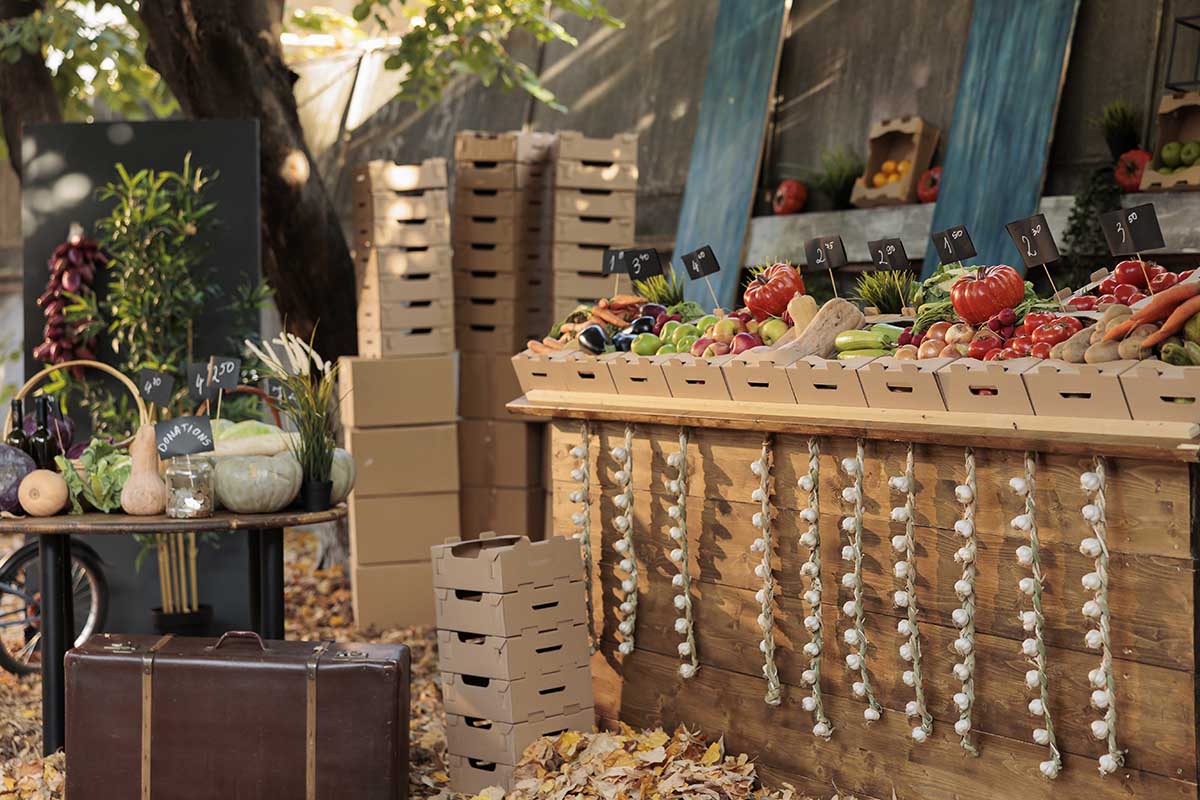Creating a Food Storage Shed
Top Takeaways
- Location and Temperature Control: Place your shed in a shaded area and insulate it well to maintain a cool, stable temperature, ensuring your food stays fresh.
- Pest and Moisture Protection: Seal gaps, use airtight containers, and control humidity to keep pests and mold from spoiling your food supplies.
- Organization and Accessibility: Install adjustable shelves, label everything, and ensure good lighting for easy access and efficient food storage management.
If you’re looking for a smart way to stockpile food, especially if you grow your own vegetables or buy in bulk, a food storage shed could be your next great project.
It offers a practical, accessible solution for keeping food items safe and fresh without taking up space inside your home.
But before you start, there are a few things to consider to ensure that your shed is well-suited for food storage.
In this guide, we’ll cover everything you need to know to create the perfect food storage shed that keeps your items safe and organized year-round.
Location, Location, Location
The first step in creating a food storage shed is deciding where to place it.
Ideally, you want it somewhere that’s easy to access and also shaded or cooler on your property.
Direct sunlight can cause the shed to heat up, which could spoil certain food items or attract pests.
A shady spot, like near trees or the side of your house, can help regulate the temperature naturally.
Also, consider how close the shed is to your kitchen or garden.
A shed that’s too far from your main living areas might make retrieving items a hassle, especially during bad weather.
Temperature Control and Insulation
Temperature is one of the most important factors in food storage.
You need to ensure that your shed remains cool and dry, even during the hottest summer months.
If the shed gets too hot, it can affect the shelf life of your canned goods, dried food, and other perishables.
Start by insulating the walls, floor, and roof of your shed to help regulate the temperature.
You might also want to install vents or small windows for proper air circulation.
For those in extreme climates, adding a small air conditioner or fan might be a good investment to keep things cool inside.
Protect Against Pests
Nobody wants to find their food supplies chewed through by rodents or invaded by insects.
Pest-proofing your food storage shed is an absolute must.
Make sure to seal any gaps in the walls, floors, and roof where pests could sneak in.
Use weatherstripping around doors and windows to create a tight seal, and add mesh screens to any vents or airways to keep out bugs.
Storing food in airtight containers or bins can also add an extra layer of protection.
Consider keeping a few natural deterrents in the shed, like cedar blocks or peppermint oil, which are known to repel certain pests.
Shelving and Organization
Good organization is key to making the most of your food storage shed.
You’ll want to install sturdy shelving units that can support the weight of your food supplies, especially if you’re storing heavy items like canned goods or large bags of grains.
- Adjustable shelves: These allow you to change the height to accommodate different types of food containers.
- Labeling: Clearly label everything so you can easily find what you need without rummaging through boxes.
- First in, first out system: Store newer food behind older items to ensure you’re using food before it expires. This is especially useful if you buy in bulk or do home canning.
A well-organized system ensures that your food stays fresh, accessible, and easy to manage.
Moisture Control
Too much humidity can lead to mold and spoilage in a food storage shed.
If you live in a humid climate, controlling moisture levels is crucial to protect your food.
One way to combat moisture is by using a dehumidifier inside the shed, especially during wetter months.
You can also place silica gel packets or moisture absorbers on shelves or inside storage bins to help maintain a dry environment.
Ensuring good air circulation through vents or fans also helps keep the shed dry and mold-free.
Lighting and Accessibility
When it comes to food storage, being able to see what you have is crucial.
Installing proper lighting in your shed will help you navigate easily and make sure you’re not missing anything.
Solar-powered lights can be a great option for sheds since they don’t require electrical wiring and are easy to install.
Alternatively, if you have access to power, standard overhead lighting or even motion sensor lights can make the shed more functional.
Don’t forget to make your storage setup easy to navigate.
Wider aisles between shelves and clearly marked sections for different food groups will save you time and effort when you’re retrieving or organizing food.
Security
Your food storage shed holds valuable resources, so it’s important to keep it secure.
A sturdy lock on the door will help prevent unauthorized access, whether from wildlife or people.
Consider installing a motion-sensing light outside the shed to deter any potential trespassers.
Additionally, organize your shed so that high-value or important items are out of sight from windows or entrances.
Creating a food storage shed is an excellent way to maximize your food preservation efforts while keeping your home clutter-free. With proper planning—like choosing the right location, controlling the temperature, and organizing your supplies—you’ll have a functional and efficient space that supports your storage needs year-round.





















